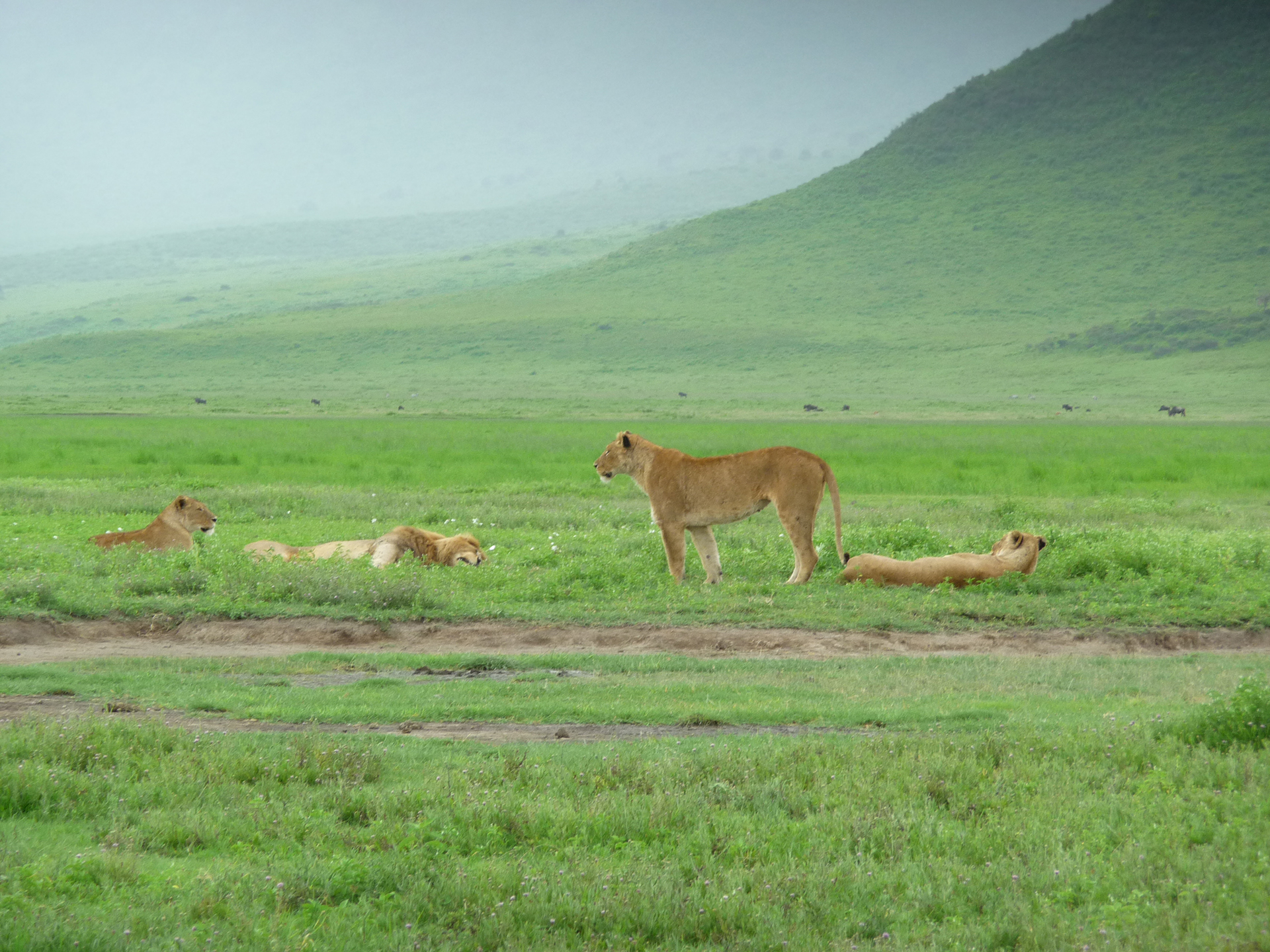Ngorongoro Crater
The Ngorongoro Crater is one of the most iconic and breathtaking natural wonders of the world. Often referred to as the “Eighth Wonder of the World,” this massive volcanic caldera is not just stunning in its beauty, but also rich in wildlife, offering one of the best game-viewing experiences on the planet.
Key Facts about Ngorongoro Crater:
1. Formation and Geography
- The Ngorongoro Crater is the world’s largest intact volcanic caldera, formed around 2-3 million years ago when a massive volcano erupted and then collapsed, creating a bowl-shaped depression that is now about 20 kilometers (12 miles) in diameter and 600 meters (1,968 feet) deep.
- The crater floor is made up of various ecosystems, including grasslands, woodlands, and swamps, which makes it a diverse and rich habitat for wildlife.
2. Wildlife and Biodiversity
- The Ngorongoro Crater is often referred to as a “lost world” because of the vast number of animals that live in this relatively isolated ecosystem.
- The crater is home to an impressive array of animals, including:
- The Big Five: The crater is one of the best places in the world to see the Big Five (lion, elephant, buffalo, leopard, and rhinoceros) all in one day, although the black rhino is more rare and difficult to spot.
- Lions: The crater has a sizable population of lions, and because of its smaller size, they are often easier to spot compared to other parks.
- Elephants: The area hosts a large population of elephants, some of which are known for having massive tusks. They can often be seen moving across the plains or around water sources.
- Other mammals: The crater is home to cheetahs, hyenas, zebras, gazelles, wildebeests, and a variety of antelope species such as Grant’s gazelles and Thomson’s gazelles.
- Birdlife: The crater also offers fantastic birdwatching with over 500 species of birds, including flamingos, eagles, and geese, particularly around the lakes and marshes.
3. The Ngorongoro Conservation Area
- The Ngorongoro Crater is part of the larger Ngorongoro Conservation Area (NCA), which covers about 8,300 square kilometers and includes not only the crater but also the surrounding highlands, grasslands, and other volcanic features.
- The NCA is unique in that it is a multiple-use area, meaning that it is home to both wildlife and human populations, particularly the Maasai people, who have lived in the area for centuries. The Maasai are allowed to graze their cattle in the crater’s surrounding highlands, which creates an interesting dynamic between conservation and traditional lifestyles.
4. Famous for Its “Crater Floor”
- The crater floor is a remarkable place where different ecosystems coexist within a small area, making it an excellent place for a day-long safari. It includes:
- Lake Magadi: A shallow soda lake, which attracts flamingos and other birdlife.
- Swamps and wetlands: These areas attract large numbers of herbivores, such as buffaloes and wildebeests, and the predators that follow them.
- Grasslands: The expansive grasslands are perfect for herds of zebras, gazelles, and wildebeests, while also providing plenty of food for the lions and hyenas that hunt them.
5. Best Time to Visit
- Dry Season (June to October): This is the best time to visit the Ngorongoro Crater for wildlife viewing, as animals congregate around water sources, making them easier to spot. The cooler temperatures of the dry season also make it more comfortable for game drives.
- Green Season (November to May): The crater is also beautiful during the wet season when the landscape is lush and green, though animals can be a bit harder to find due to the thicker vegetation. However, this is when calving takes place for many species, so it’s a good time to see newborn animals.
6. The Crater Rim and Scenic Views
- The crater rim offers some of the most stunning views in Tanzania, with panoramas of the caldera below and the surrounding highlands. The sheer cliffs surrounding the crater make it look like a giant natural amphitheater, adding to its majesty.
- Olduvai Gorge, which is near the crater, is one of the most important archaeological sites in the world and has provided crucial evidence about early human evolution. This site is often included in visits to the area, especially for those interested in anthropology and history.
7. Tourism and Activities
- Game Drives: The Ngorongoro Crater is one of the best places for game drives, with the chance to see a high concentration of animals in a relatively small area. The crater floor can be easily explored in a day, with the option of traveling through different ecosystems and wildlife hotspots.
- Hiking: Visitors can hike on the crater rim, where there are various viewpoints offering spectacular vistas. The Empakai Crater, a smaller but beautiful crater within the conservation area, is also worth a visit for those interested in hiking and scenic views.
- Cultural Experiences: Visiting a Maasai village near the crater allows you to learn about the traditions and lifestyles of this indigenous group who have coexisted with the wildlife in the area for centuries.
8. Conservation and Challenges
- Ngorongoro is under the threat of overpopulation and overgrazing due to the presence of the Maasai and their livestock. This has led to challenges in terms of maintaining a balance between wildlife conservation and the needs of local people.
- The park faces issues like human-wildlife conflict, poaching, and invasive species that threaten the natural balance of the ecosystem.
- Conservation efforts are focused on maintaining the integrity of the crater as a UNESCO World Heritage site while addressing the pressures from both tourism and local populations.
9. How to Get There
- Ngorongoro Crater is about a four-hour drive from Arusha, Tanzania. It is located between the Serengeti and Lake Manyara, making it an easy stop along the northern safari circuit.
- There are also flights to the nearby Manyara Airstrip, and you can easily reach the crater from there via a short drive.
Why Visit Ngorongoro Crater?
The Ngorongoro Crater is an unforgettable destination for any nature lover, and it offers an unparalleled opportunity to experience a concentration of wildlife in a breathtaking natural setting. Whether you’re looking to see the Big Five, witness the spectacle of flamingos on the lake, or simply take in the views of the caldera from above, the crater has something for everyone. It’s also one of the few places on Earth where you can see a vibrant mix of ecosystems, wildlife, and human culture all in one place.
It’s a must-visit for anyone planning a safari in northern Tanzania, and the game viewing, scenic beauty, and unique ecosystems make it a once-in-a-lifetime experience!

